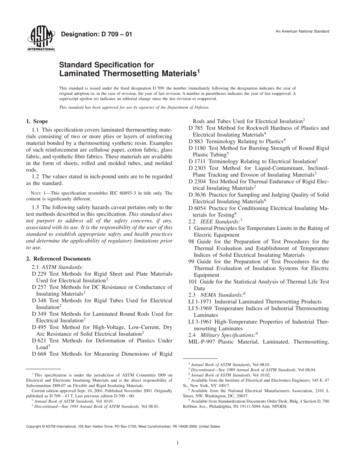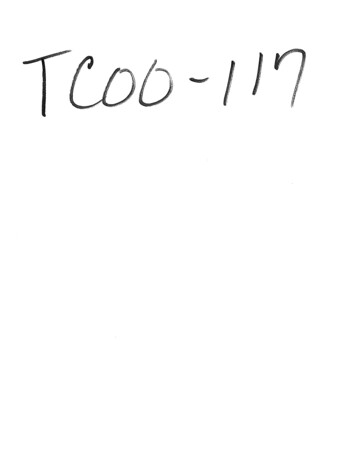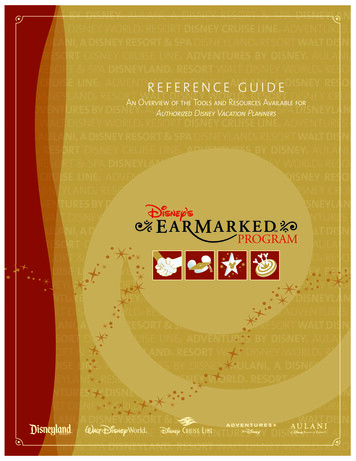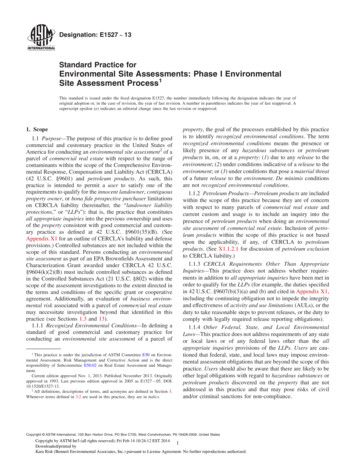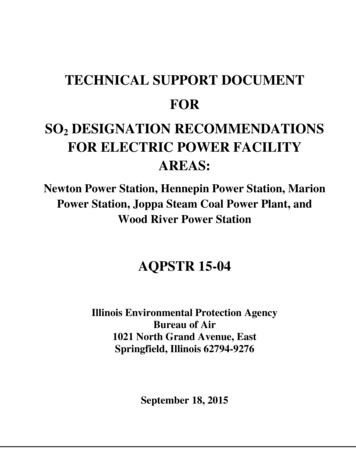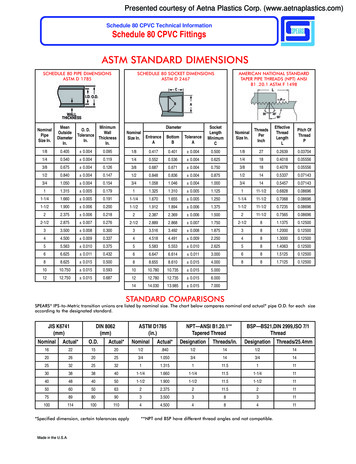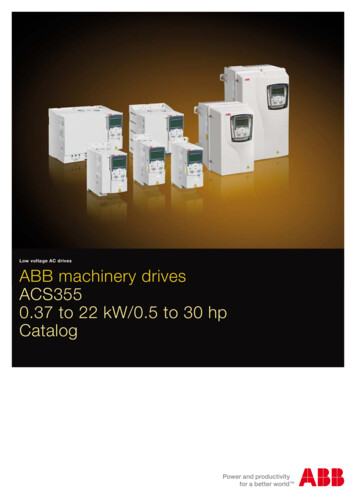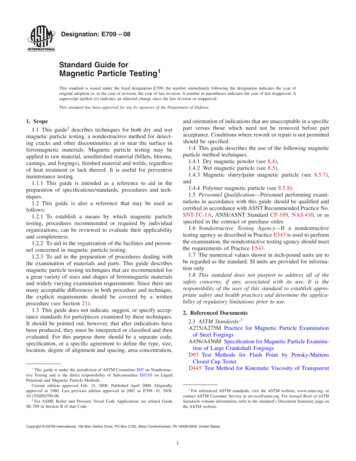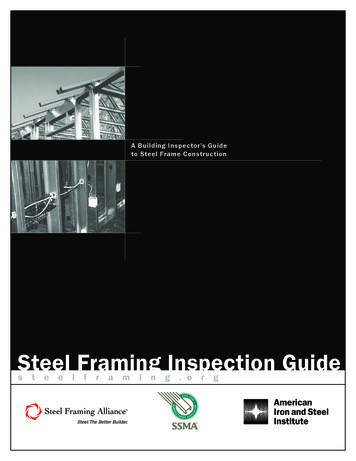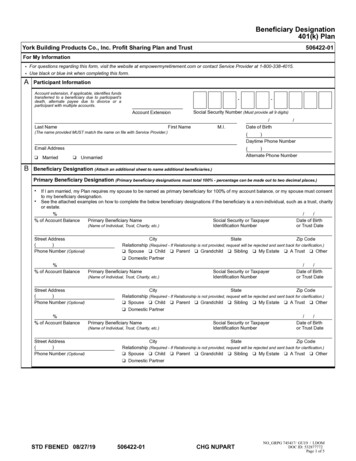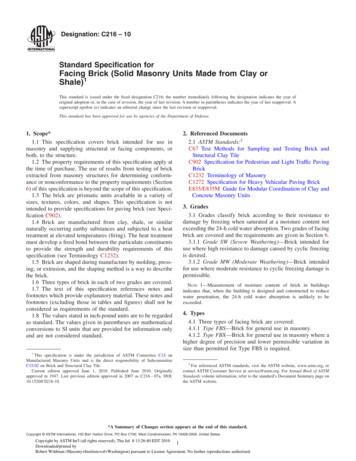
Transcription
Designation: C216 – 10Standard Specification forFacing Brick (Solid Masonry Units Made from Clay orShale)1This standard is issued under the fixed designation C216; the number immediately following the designation indicates the year oforiginal adoption or, in the case of revision, the year of last revision. A number in parentheses indicates the year of last reapproval. Asuperscript epsilon ( ) indicates an editorial change since the last revision or reapproval.This standard has been approved for use by agencies of the Department of Defense.1. Scope*1.1 This specification covers brick intended for use inmasonry and supplying structural or facing components, orboth, to the structure.1.2 The property requirements of this specification apply atthe time of purchase. The use of results from testing of brickextracted from masonry structures for determining conformance or nonconformance to the property requirements (Section6) of this specification is beyond the scope of this specification.1.3 The brick are prismatic units available in a variety ofsizes, textures, colors, and shapes. This specification is notintended to provide specifications for paving brick (see Specification C902).1.4 Brick are manufactured from clay, shale, or similarnaturally occurring earthy substances and subjected to a heattreatment at elevated temperatures (firing). The heat treatmentmust develop a fired bond between the particulate constituentsto provide the strength and durability requirements of thisspecification (see Terminology C1232).1.5 Brick are shaped during manufacture by molding, pressing, or extrusion, and the shaping method is a way to describethe brick.1.6 Three types of brick in each of two grades are covered.1.7 The text of this specification references notes andfootnotes which provide explanatory material. These notes andfootnotes (excluding those in tables and figures) shall not beconsidered as requirements of the standard.1.8 The values stated in inch-pound units are to be regardedas standard. The values given in parentheses are mathematicalconversions to SI units that are provided for information onlyand are not considered standard.1This specification is under the jurisdiction of ASTM Committee C15 onManufactured Masonry Units and is the direct responsibility of SubcommitteeC15.02 on Brick and Structural Clay Tile.Current edition approved June 1, 2010. Published June 2010. Originallyapproved in 1947. Last previous edition approved in 2007 as C216 – 07a. DOI:10.1520/C0216-10.2. Referenced Documents2.1 ASTM Standards:2C67 Test Methods for Sampling and Testing Brick andStructural Clay TileC902 Specification for Pedestrian and Light Traffic PavingBrickC1232 Terminology of MasonryC1272 Specification for Heavy Vehicular Paving BrickE835/E835M Guide for Modular Coordination of Clay andConcrete Masonry Units3. Grades3.1 Grades classify brick according to their resistance todamage by freezing when saturated at a moisture content notexceeding the 24-h cold water absorption. Two grades of facingbrick are covered and the requirements are given in Section 6.3.1.1 Grade SW (Severe Weathering)—Brick intended foruse where high resistance to damage caused by cyclic freezingis desired.3.1.2 Grade MW (Moderate Weathering)—Brick intendedfor use where moderate resistance to cyclic freezing damage ispermissible.NOTE 1—Measurement of moisture content of brick in buildingsindicates that, when the building is designed and constructed to reducewater penetration, the 24-h cold water absorption is unlikely to beexceeded.4. Types4.1 Three types of facing brick are covered:4.1.1 Type FBS—Brick for general use in masonry.4.1.2 Type FBX—Brick for general use in masonry where ahigher degree of precision and lower permissible variation insize than permitted for Type FBS is required.2For referenced ASTM standards, visit the ASTM website, www.astm.org, orcontact ASTM Customer Service at service@astm.org. For Annual Book of ASTMStandards volume information, refer to the standard’s Document Summary page onthe ASTM website.*A Summary of Changes section appears at the end of this standard.Copyright ASTM International, 100 Barr Harbor Drive, PO Box C700, West Conshohocken, PA 19428-2959, United States.Copyright by ASTM Int'l (all rights reserved); Thu Jul 8 13:26:40 EDT 20101Downloaded/printed byRobert Wildman (Masonry Institute of Washington) pursuant to License Agreement. No further reproductions authorized.
C216 – 10TABLE 1 Physical RequirementsDesignationGrade SWGrade MWAMinimum Compressive Strengthpsi, (MPa) gross areaAverage of 5Individualbrick3000 (20.7)2500 (17.2)2500 (17.2)2200 (15.2)Maximum Water Absorptionby 5-h Boiling, %AverageIndividualof 5 brick17.020.022.025.0Maximum SaturationCoefficientAAverageIndividualof 5 brick0.780.800.880.90The saturation coefficient is the ratio of absorption by 24-h submersion in cold water to that after 5-h submersion in boiling water.4.1.3 Type FBA—Brick for general use in masonry selectedto produce characteristic architectural effects resulting fromnonuniformity in size and texture of the individual units.4.2 When the type is not specified, the requirements forType FBS shall govern.5. Ordering Information5.1 Orders for facing brick under this specification shallinclude the following information:5.1.1 Grade (Section 3)—Grade SW governs when Grade isnot specified.5.1.2 Type (Section 4)—Type FBS governs when Type is notspecified.5.1.2.1 For Type FBA, specify chippage (8.4), tolerances(Section 10), or approve a designated sample.5.1.3 Color, color range, and texture (9.1) by approving asample.5.1.3.1 Finish on more than one face and one end (9.2).5.1.4 Size (10.1)—Specify width by height by length.5.1.5 Sampling (12.2)—Person to select samples and placeor places of selection of samples for testing.5.2 Orders for facing brick under this specification mayinclude the following information:5.2.1 Strength (6.2)—Specify only if above minimum compressive strength in Table 1.5.2.2 Coring (11.1)—At option of manufacturer if notspecified.5.2.3 Frogging (11.2)—Frog permitted in one bearing faceif not specified.5.2.4 Costs of Tests (Note 14)—Party who will pay andconditions for payment of compliance testing.NOTE 2—Color, color range, and texture are best specified by identifying a particular manufacturer and unit designation. Nominal dimensionsshould not be used to specify size.NOTE 3—See sections 6.3 and 7 for optional information.6. Physical Properties6.1 Durability—When Grade is not specified, the requirements for Grade SW shall govern.6.1.1 Physical Property Requirements—The brick shallconform to the physical requirements for the Grade specified asprescribed in Table 1. For the compressive strength requirements in Table 1, test the unit with the compressive forceperpendicular to the bed surface of the unit, with the unit in thestretcher position.6.1.2 Absorption Alternate—The saturation coefficient requirement does not apply, provided the 24-h cold waterabsorption of each unit of a representative sample of five brickdoes not exceed 8.0 %.6.1.3 Freezing and Thawing Alternative—The requirementsfor 5-h boiling water absorption and saturation coefficient donot apply, provided a representative sample of five brick,meeting the strength requirements of Table 1, passes thefreezing and thawing test as described in the Rating Section ofthe Freezing and Thawing test procedures of Test MethodsC67:6.1.3.1 Grade SW: Breakage and Weight LossRequirement—No individual unit separates or disintegratesresulting in a weight loss greater than 0.5 % of its original dryweight.NOTE 4—The 50 cycle freezing and thawing test is used as analternative only when the brick do not conform to either Table 1requirements for maximum water absorption and saturation coefficient, orto the requirements of the Absorption Alternate in 6.1.2.6.1.3.2 Grade SW: Cracking Requirement—No individualunit develops a crack that exceeds, in length, the unit’s leastdimension.6.1.4 Low Weathering Index Alternative—If the brick areintended for use exposed to weather where the weatheringindex is less than 50 (see Fig. 1), and unless otherwisespecified, the requirements given in Table 1 for 5-h boilingwater absorption and for saturation coefficient shall not apply,but the minimum average compressive strength requirement of2500 psi (17.2 MPa) shall apply.NOTE 5—The effect of weathering on brick is related to the weatheringindex, which for any locality is the product of the average annual numberof freezing cycle days and the average annual winter rainfall in inches(millimetres), defined as follows.3A Freezing Cycle Day is any day during which the air temperaturepasses either above or below 32 F (0 C). The average number of freezingcycle days in a year may be taken to equal the difference between themean number of days during which the minimum temperature was 32 For below, and the mean number of days during which the maximumtemperature was 32 F or below.Winter Rainfall is the sum, in inches (millimetres), of the mean monthlycorrected precipitation (rainfall) occurring during the period between andincluding the normal date of the first killing frost in the fall and the normaldate of the last killing frost in the spring. The winter rainfall for any periodis equal to the total precipitation less one tenth of the total fall of snow,sleet, and hail. Rainfall for a portion of a month is prorated.Fig. 1 indicates general areas of the United States which correspond tothe weathering index categories listed. The index for geographic locationsnear the 50 line should be determined by analysis of weather bureau localclimatological summaries, with due regard to the effect of microclimaticconditions, especially altitude.The recommended correlation between grade of facing brick, weathering index, and exposure is found in Fig. 1. The specifier may use theserecommendations or use the grade descriptions and physical requirements3Data needed to determine the weathering for any locality may be found orestimated from tables of Local Climatological Data—Annual Summary withComparative Data available from the National Oceanic and Atmospheric Administration.Copyright by ASTM Int'l (all rights reserved); Thu Jul 8 13:26:40 EDT 20102Downloaded/printed byRobert Wildman (Masonry Institute of Washington) pursuant to License Agreement. No further reproductions authorized.
C216 – 10Grade Recommendations for Face ExposuresWeathering Index (Note 5)ExposureIn vertical surfaces:In contact with earthNot in contact with earthIn other than vertical surfaces:In contact with earthNot in contact with earthLessthan 5050 andgreaterSW orMWSW orMWSWSWSW orMWSWSWSWFIG. 1 Weathering Indices in the United Statesalong with use exposure and local climatological conditions to selectgrade.6.2 Strength—When brick are required having strengthsgreater than prescribed by this specification, the purchaser shallspecify the desired minimum compressive strength.6.3 Initial Rate of Absorption (IRA)—Test results for IRAshall be determined in accordance with the IRA (Suction)(Laboratory Test) of Test Methods C67 and shall be furnishedat the request of the specifier or purchaser. IRA is not aqualifying condition or property of units in this specification.This property is measured in order to assist in mortar selectionand material handling in the construction process. See Note 6.NOTE 6—Initial Rate of Absorption (Suction)—Both laboratory andfield investigation have shown that strong and watertight joints betweenmortar and masonry units are not achieved by ordinary constructionmethods when the units as laid have excessive initial rates of absorption.Mortar that has stiffened somewhat because of excessive loss of mixingwater to a unit may not make complete and intimate contact with thesecond unit, resulting in poor adhesion, incomplete bond, and waterpermeable joints of low strength. IRA of the units is determined by theoven-dried procedure described in the IRA (Suction) (Laboratory Test) ofTest Methods C67. IRA in the field depends on the moisture content of themasonry unit and is determined in accordance with the IRA (Suction)—Field Test of Test Methods C67. Units having average field IRA exceeding30 g/min·30 in.2(30 g/min·194 cm2) should have their IRA reduced below30 g/min·30 in.2 prior to laying. They may be wetted immediately beforethey are laid, but it is preferable to wet them thoroughly 3 to 24 h prior totheir use so as to allow time for moisture to become distributed throughoutthe unit.NOTE 7—Loose sand, such as mold-release sand in molded brick andparting agents, used in the manufacturing process is not intended as asurface coating. Such loose sand is typically removed during the processof construction and cleaning and is not addressed in this specification.NOTE 8—The cleaning procedures used on surface-coated brick canhave an effect on the appearance of the surface coating. Manufacturersshould be consulted for specific cleaning recommendations on these units.7. Efflorescence7.1 Brick are not required to be tested for efflorescence tocomply with this specification unless requested by the specifieror purchaser. When the efflorescence test is requested by thespecifier or purchaser, the brick shall be sampled at the place ofmanufacture, and tested in accordance with Test Methods C67,Copyright by ASTM Int'l (all rights reserved); Thu Jul 8 13:26:40 EDT 20103Downloaded/printed byRobert Wildman (Masonry Institute of Washington) pursuant to License Agreement. No further reproductions authorized.
C216 – 10TABLE 2 Maximum Permissible Extent of Chippage From the Edges and Corners of Finished Face or Faces onto the geAllowedAChippage in in. (mm) in fromEdgePercentageAllowedACornerChippage in in. (mm) in fromEdge1 4 – 3 895 to 100 %0–1 8 – 1 4(3.2–6.4)(6.4–9.5)(0–3.2)1 4 –5 163 8 – 1 290 to 100 %0–1 410 % or less(6.4–7.9)(9.5–12.7)(0–6.4)5 16 –7 161 2 – 3 485 to 100 %0–5 1615 % or less(7.9–11.1)(12.7–19.1)(0
2.1 ASTM Standards:2 C67 Test Methods for Sampling and Testing Brick and Structural Clay Tile C902 Specification for Pedestrian and Light Traffic Paving Brick C1232 Terminology of Masonry C1272 Specification for Heavy Vehicular Paving Brick E835/E835M Guide for Modular Coordination of Clay and Concrete Masonry Units 3. Grades 3.1 Grades classify brick according to their resistance to damage .

